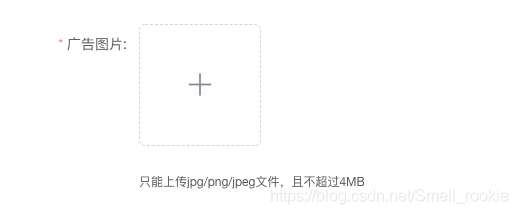应用结构
实际上,Vuex 在怎么组织你的代码结构上面没有任何限制,相反,它强制规定了一系列高级的原则:
1、应用级的状态集中放在 store 中。
2、改变状态的唯一方式是提交mutations,这是个同步的事务。
3、异步逻辑应该封装在action 中。
只要你遵循这些规则,怎么构建你的项目的结构就取决于你了。如果你的 store 文件非常大,仅仅拆分成 action、mutation 和 getter 多个文件即可。
对于稍微复杂点的应用,我们可能都需要用到模块。下面是一个简单的项目架构:
├── index.html
├── main.js
├── api
│ └── ... # 这里发起 API 请求
├── components
│ ├── App.vue
│ └── ...
└── store
├── index.js # 组合 modules 、export store
├── actions.js # 根 action
├── mutations.js # 根 mutations
└── modules
├── cart.js # cart 模块
└── products.js # products 模块
关于更多,查看 购物车实例。
Modules
由于使用了单一状态树,应用的所有状态都包含在一个大对象内。但是,随着我们应用规模的不断增长,这个Store变得非常臃肿。
为了解决这个问题,Vuex 允许我们把 store 分 module(模块)。每一个模块包含各自的状态、mutation、action 和 getter,甚至是嵌套模块, 如下就是它的组织方式:
const moduleA = {
state: { ... },
mutations: { ... },
actions: { ... },
getters: { ... }
}
const moduleB = {
state: { ... },
mutations: { ... },
actions: { ... }
}
const store = new Vuex.Store({
modules: {
a: moduleA,
b: moduleB
}
})
store.state.a // -> moduleA's state
store.state.b // -> moduleB's state
模块本地状态
模块的 mutations 和 getters方法第一个接收参数是模块的本地状态。
const moduleA = {
state: { count: 0 },
mutations: {
increment: (state) {
// state 是模块本地的状态。
state.count++
}
},
getters: {
doubleCount (state) {
return state.count * 2
}
}
}
相似地,在模块的 actions 中,context.state 暴露的是本地状态, context.rootState暴露的才是根状态。
const moduleA = {
// ...
actions: {
incrementIfOdd ({ state, commit }) {
if (state.count % 2 === 1) {
commit('increment')
}
}
}
}
在模块的 getters 内,根状态也会作为第三个参数暴露。
const moduleA = {
// ...
getters: {
sumWithRootCount (state, getters, rootState) {
return state.count + rootState.count
}
}
}
命名空间
要注意,模块内的 actions、mutations 以及 getters 依然注册在全局命名空间内 —— 这就会让多个模块响应同一种 mutation/action 类型。你可以在模块的名称中加入前缀或者后缀来设定命名空间,从而避免命名冲突。如果你的 Vuex 模块是一个可复用的,执行环境也未知的,那你就应该这么干了。距离,我们想要创建一个 todos 模块:
// types.js
// 定义 getter、 action 和 mutation 的常量名称
// 并且在模块名称上加上 `todos` 前缀
export const DONE_COUNT = 'todos/DONE_COUNT'
export const FETCH_ALL = 'todos/FETCH_ALL'
export const TOGGLE_DONE = 'todos/TOGGLE_DONE'
// modules/todos.js
import * as types from '../types'
// 用带前缀的名称来定义 getters, actions and mutations
const todosModule = {
state: { todos: [] },
getters: {
[types.DONE_COUNT] (state) {
// ...
}
},
actions: {
[types.FETCH_ALL] (context, payload) {
// ...
}
},
mutations: {
[types.TOGGLE_DONE] (state, payload) {
// ...
}
}
}
注册动态模块
你可以用 store.registerModule 方法在 store 创建之后注册一个模块:
store.registerModule('myModule', {
// ...
})
模块的 store.state.myModule 暴露为模块的状态。
其他的 Vue 插件可以为应用的 store 附加一个模块,然后通过动态注册就可以使用 Vuex 的状态管理功能了。例如,vuex-router-sync 库,通过在一个动态注册的模块中管理应用的路由状态,从而将 vue-router 和 vuex 集成。
你也能用 store.unregisterModule(moduleName) 移除动态注册过的模块。但是你不能用这个方法移除静态的模块(也就是在 store 创建的时候声明的模块)。
Plugins
Vuex 的 store 接收 plugins 选项,这个选项暴露出每个 mutation 的钩子。一个 Vuex 的插件就是一个简单的方法,接收 sotre 作为唯一参数:
const myPlugin = store => {
// 当 store 在被初始化完成时被调用
store.subscribe((mutation, state) => {
// mutation 之后被调用
// mutation 的格式为 {type, payload}。
})
}
然后像这样使用:
const store = new Vuex.Store({
// ...
plugins: [myPlugin]
})
在插件内提交 Mutations
插件不能直接修改状态 - 这就像你的组件,它们只能被 mutations 来触发改变。
通过提交 mutations,插件可以用来同步数据源到 store。例如, 为了同步 websocket 数据源到 store (这只是为说明用法的例子,在实际中,createPlugin 方法会附加更多的可选项,来完成复杂的任务)。
export default function createWebSocketPlugin (socket) {
return store => {
socket.on('data', data => {
store.commit('receiveData', data)
})
store.subscribe(mutation => {
if (mutation.type === 'UPDATE_DATA') {
socket.emit('update', mutation.payload)
}
})
}
}
const plugin = createWebSocketPlugin(socket)
const store = new Vuex.Store({
state,
mutations,
plugins: [plugin]
})
生成状态快照
有时候插件想获取状态 “快照” 和状态的改变前后的变化。为了实现这些功能,需要对状态对象进行深拷贝:
const myPluginWithSnapshot = store => {
let prevState = _.cloneDeep(store.state)
store.subscribe((mutation, state) => {
let nextState = _.cloneDeep(state)
// 对比 prevState 和 nextState...
// 保存状态,用于下一次 mutation
prevState = nextState
})
}
** 生成状态快照的插件只能在开发阶段使用,使用 Webpack 或 Browserify,让构建工具帮我们处理:
const store = new Vuex.Store({
// ...
plugins: process.env.NODE_ENV !== 'production'
? [myPluginWithSnapshot]
: []
})
插件默认会被起用。为了发布产品,你需要用 Webpack 的 DefinePlugin 或者 Browserify 的 envify 来转换 process.env.NODE_ENV !== 'production' 的值为 false。
内置 Logger 插件
如果你正在使用 vue-devtools,你可能不需要。
Vuex 带来一个日志插件用于一般的调试:
import createLogger from 'vuex/dist/logger'
const store = new Vuex.Store({
plugins: [createLogger()]
})
createLogger 方法有几个配置项:
const logger = createLogger({
collapsed: false, // 自动展开记录 mutation
transformer (state) {
// 在记录之前前进行转换
// 例如,只返回指定的子树
return state.subTree
},
mutationTransformer (mutation) {
// mutation 格式 { type, payload }
// 我们可以按照想要的方式进行格式化
return mutation.type
}
})
日志插件还可以直接通过 <script> 标签, 然后它会提供全局方法 createVuexLogger 。
要注意,logger 插件会生成状态快照,所以仅在开发环境使用。
严格模式
要启用严格模式,只需在创建 Vuex store 的时候简单地传入 strict: true。
const store = new Vuex.Store({
// ...
strict: true
})
在严格模式下,只要 Vuex 状态在 mutation 方法外被修改就会抛出错误。这确保了所有状态修改都会明确的被调试工具跟踪。
开发阶段 vs. 发布阶段
不要在发布阶段开启严格模式! 严格模式会对状态树进行深度监测来检测不合适的修改 —— 确保在发布阶段关闭它避免性能损耗。
跟处理插件的情况类似,我们可以让构建工具来处理:
const store = new Vuex.Store({
// ...
strict: process.env.NODE_ENV !== 'production'
})
相关引用
http://vuex.vuejs.org/en/plugins.html
http://vuex.vuejs.org/en/strict.html
http://vuex.vuejs.org/en/modules.html
http://vuex.vuejs.org/en/structure.html
到此这篇关于一篇关于Vue.javascript 2.0的Vuex 2.0 你需要更新的知识库就介绍到这了。目标和信念给人以持久的动力,它是人的精神支柱。更多相关一篇关于Vue.javascript 2.0的Vuex 2.0 你需要更新的知识库内容请查看相关栏目,小编编辑不易,再次感谢大家的支持!


